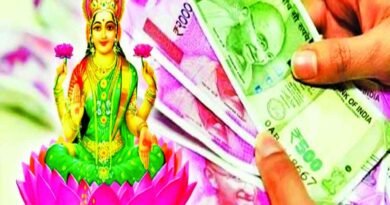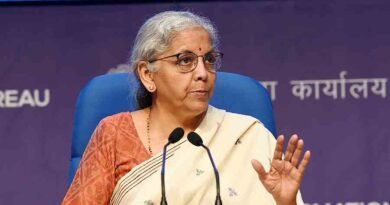One year of ills
The PM may be still popular in the afterglow of last year’s verdict but he needs to take bold moves in managing a pandemic-hit nation
The best part about “forces of nature” is that they obfuscate human effort or even the lack of it. They are simply too tidal and overwhelming, swamping our reason, judgment and mind. They are an opportunity to prove ourselves and excuse our failings at the same time. Which is why the shroud of the Corona pandemic, which has left our nation distraught, has kept us busy grappling with the “before” and “after” scenario that could spare Prime Minister Narendra Damodar Modi from a rigorous assessment of his first year in office. Perhaps, his familiarity in an upending, unfamiliar scenario is the reason why he continues to be the preferred leader in opinion polls of the moment. And it is this familiarity which could be his biggest shield for what he could not deliver, saying he tried his best, despite the tokenism of empathising with the migrants and common people. Under the shadow of India’s biggest health and economic crisis, he is still drawing on his “before” seen muscularity to retain popularity among the masses, which is desperately looking to clutch on to a reassuring and paternal figurehead in the “after” phase. And having won a monolithic verdict last May, he is playing up his perceived deliverer image by addressing the nation, writing letters to his citizens, relying on shared emotions and even praising and consulting Chief Ministers in a new-found spirit of cooperative federalism. Except such optics are not enough for a nation gasping for breath, squeezed by the pandemic on one side and a collapsing economy on the other. And the mammoth surge of a human tragedy unfolding, in the form of deaths due to disease, joblessness, starvation and migration, clearly needs superhuman action, not just humane reactions. Truth be told, India’s pandemic is now a people’s war, being waged by not just the Government but cumulatively by doctors, scientists, police, Samaritans, activists, citizens, NGOs and corporates. And it is this combined “let’s save our nation” spirit unitedly and inclusively that has triumphed over the imposed idea of “One India” that thrives on eliminating and filtering all kinds of otherness. So yes, the memories of attacks on minorities, dissenters and students are off the board at the moment, excused even in the pandemic era as aberrations of a party that has to feed its core majoritarian voter base rather than being an assault on democracy. That’s what the “after” scenario does, pushes back the “before.”
But the after-effects of what is not done now could be disastrous. The nation will have to pay for the gross insensitivity of an ill-planned lockdown to contain the pandemic in the long-term. The Prime Minister may be commiserating with migrant woes but did not plan a concrete relief and rehabilitation package that could have stopped an urban exodus of people who depend on daily wages to just survive. Unannounced fallback during the lockdown has pushed them to penury. Had evacuations by trains and buses been planned even back then, when the infectivity curve hadn’t shot up, we could have saved on passing the disease burden to the hinterland as is happening now. We could have easily avoided the deaths on roads and highways and even trains, which are now chronically under-served in terms of food and water provisions. The economy is whooshing down the sink hole with the RBI admitting our GDP could go into negative territory, the demand horribly low and joblessness at an all-time high. Then there is spiralling inflation. Frankly, the Modi Government’s self-sufficient growth model, released with fanfare over days with credit-based offerings and structural changes in many sectors, is gestational and not responsive to the current calamity. It must increase spending and put money in people’s hands. That alone would close the demand-supply gap across all sectors. Without this infusion now, any reformatory plan, no matter how well-intentioned, won’t make sense at all, particularly to the 12 crore people who lost their jobs in April alone. More people have slid below the poverty line over the last two months and inequity is at its sharpest. The Government was anyway carrying the albatross of a slowing economy before the pandemic, the GDP at five per cent in 2019-20, lower than what it was in 2018-19. So if not now, then when? Not to forget that self-sufficiency or atma nirbharata has to begin with sound health and education, both of which need a lot of investment and reprioritising. And no matter how opportune a moment this is to woo the West to shift its bases from China to India, we still do not have enough ease of business. In fact, for all the “vocal for local” talk and even convincing international companies to “Make in India” and lend their expertise, China still has the manufacturing edge and we will need some time to catch up. Yes, we have done well with agriculture, with a good output and now enabling policies on agri-businesses but without feeding urban hubs and demand, there could be a problem of too much for whom. As for our engagement with the world, the abrogation of Article 370, the reorganisation of Kashmir and the religion-based citizenship law have not been accepted very well by our Western allies, including the US. And now we have an enraged China snapping at our heels. Perhaps in notching up too many firsts, the Government has been in a bit of a hurry that has cost us the battle of perception. Even now, when most conservative economies are loosening their purse strings, we are still holding back. And this saviour-like will cannot be ascribed to the “forces of nature” if legacy is what Modi wants.
Source: The Pioneer




